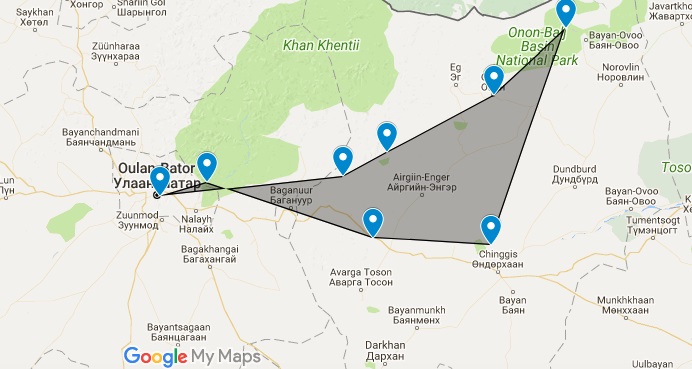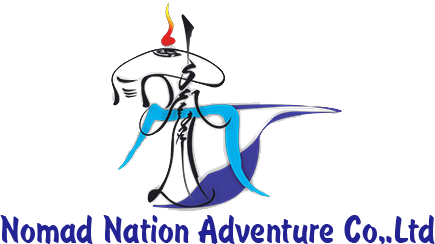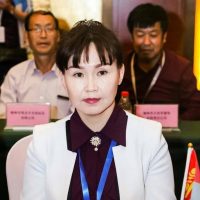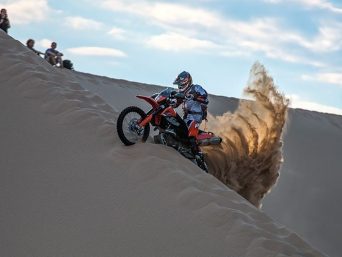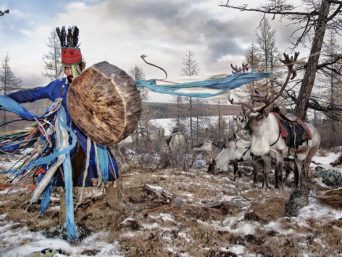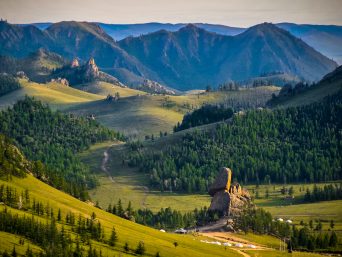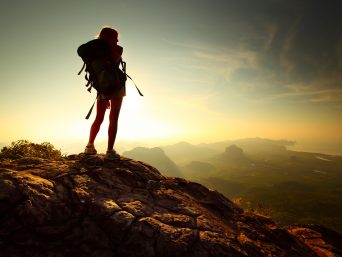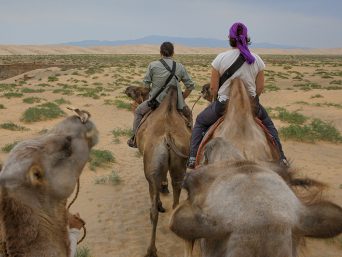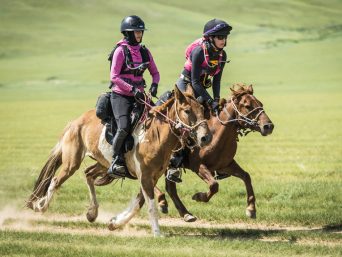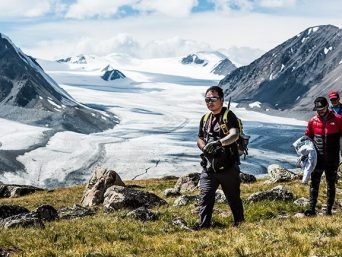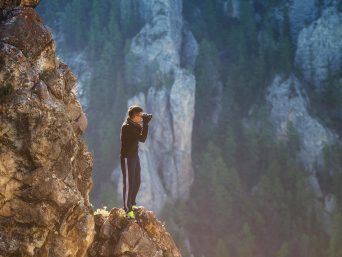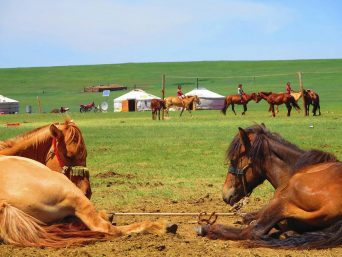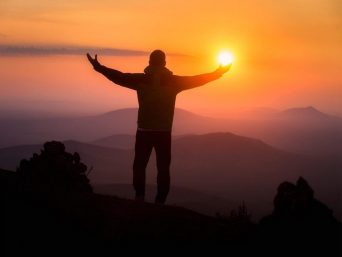Quite possible to modify this program according to your wishes!!!
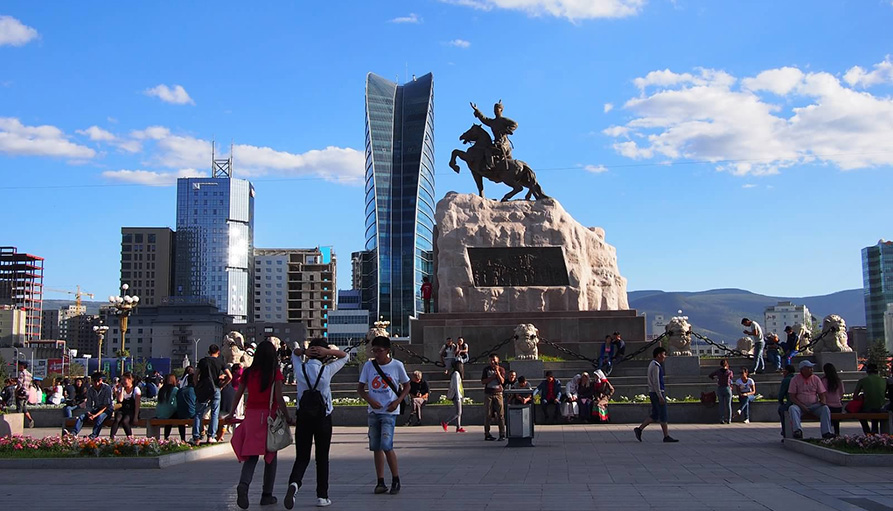
Day – 1 : Ulan Bator
Arrival at Ulan Bator and transfer to your hotel for a warm shower and a moment to relax after this long flight.
Afternoon, visit of Gandantegchinlin Monastery. Built in 1809, the Gandantegchinlin Monastery – formerly known as the Gandan Monastery – is a Tibetan-style Buddhist monastery located in Ulan Bator. Its name of Tibetan origin can be translated as “Great site full of Joy”.Several hundred monks currently reside there.
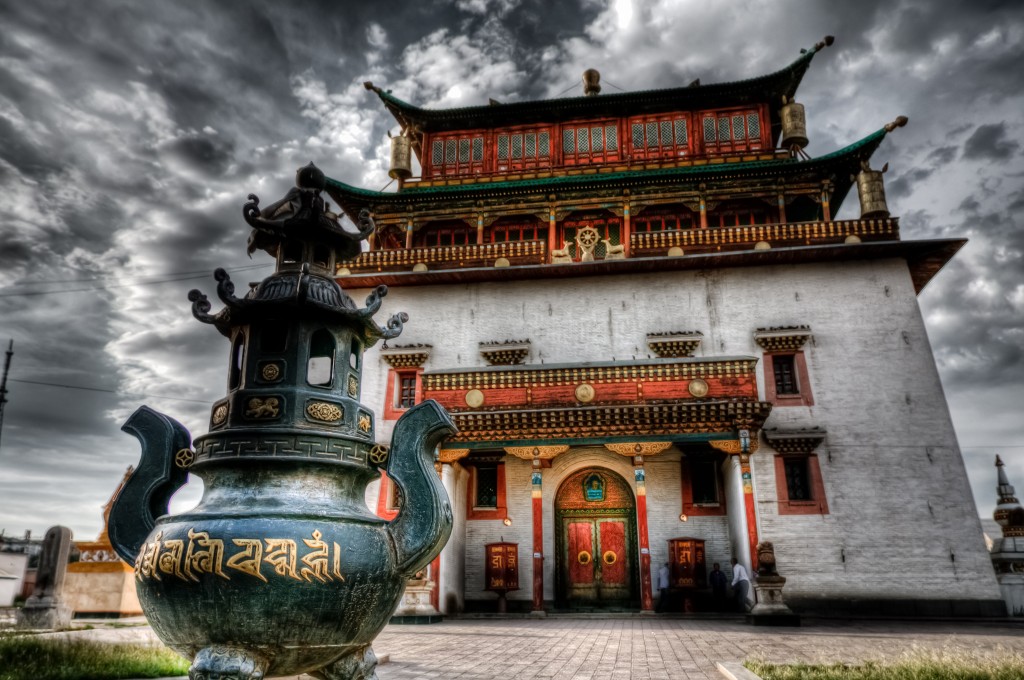 It contains a statue of Megjid-Janraiseg (Bodhisattva Avalokiteshvara – called Chenrezig in Tibetan) by 25 meters high.
It contains a statue of Megjid-Janraiseg (Bodhisattva Avalokiteshvara – called Chenrezig in Tibetan) by 25 meters high.
The original statue, made of copper, was erected in 1911 and was dismantled in 1937 by Soviet troops (the remains of the statue were subsequently used to make bullets during the siege of Leningrad). Following the fall of communist regimes, it was rebuilt in 1996 with donations of gold from Nepal and Japan.
Adorned with gold and nearly 2,286 precious stones, the statue weighs over 20 tons and is covered with nearly 100 kg of silk clothing.
Visit of the National Museum of Mongolian History. The National Museum of Mongolian History tells the story of the country, from prehistoric times to today. In this museum there is also an ethnographic section with costumes and jewels from various ethnic groups of countries: Kazakhstan, Buriats, Clzemchins…
Dinner and overnight at the hotel.
Day – 2 Ulan Bator to Gengis Khan equestrian statue (100km motorcycle)
Early in the morning we leave the bustle of the capital to start our adventure in the land of Genghis Khan. This great conqueror was the founder of the Mongol empire. Following an asphalt road, we head east and discover our first images of Mongolia: herds of wild horses galloping at the edge of the track, steaming yurts at the bottom of the valley, etc …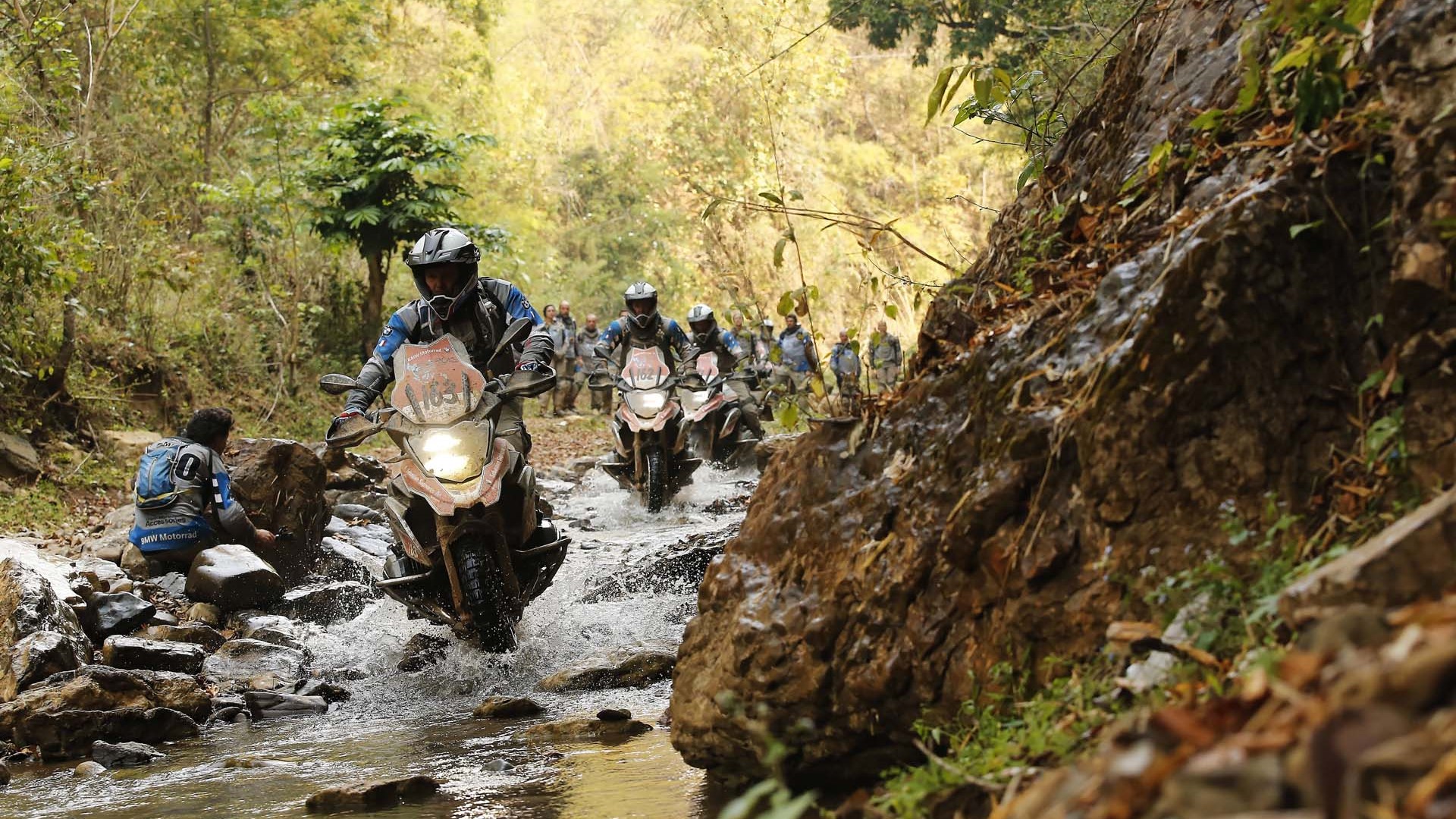
All our stuff brought by your vehicle, so nothing bothers you when you enjoy your adventure!
Before arriving at our first nomadic family, we visit the famous equestrian statue of Chinggis Khan.
Chingis Khan equestrian statue:
The statue is part of the Chinggis Khan statue complex is a 40-meter high statue of Chinggis Khan on horseback, on the bank of the Tuul River (54 km east of Ulan Batar), where according to legend , Chinggis Khan found a golden whip. The statue is symbolically pointed east towards his birthplace. 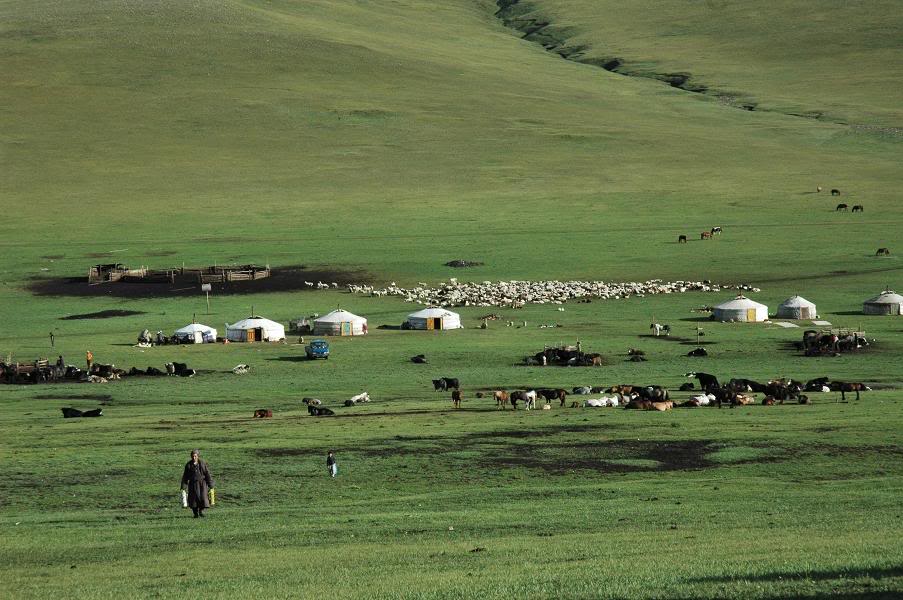 It is at the top of the Chinggis Khan Statue complex, a reception center, itself 10 meters high, with 36 columns representing the 36 Khans of Genghis at Ligdan Khan. Visitors walk to the head of the horse across his chest and neck, offering breathtaking views of the endless steppes of Mongolia. On site two other equestrian sculptures.
It is at the top of the Chinggis Khan Statue complex, a reception center, itself 10 meters high, with 36 columns representing the 36 Khans of Genghis at Ligdan Khan. Visitors walk to the head of the horse across his chest and neck, offering breathtaking views of the endless steppes of Mongolia. On site two other equestrian sculptures.
Lunch is at the restaurant of the equestrian statue of Chinggis Khan
In the afternoon we will arrive at a nomadic family who lives in the beautiful valley of Erdene. It’s a big family that raises horses. Their horses have won Naadam‘s race about ten times.
In the evening, our hosts will prepare a traditional specialty, the Khorkhog, the “Mongolian barbecue”.
The Khorkhog is a traditional nomadic specialty of the Mongolian steppe. You will almost never find it in a restaurant.
To prepare the Khorkhog, nomads cut mutton or goat into pieces, keeping the bones. Twenty stones the size of a fist are heated in the fire.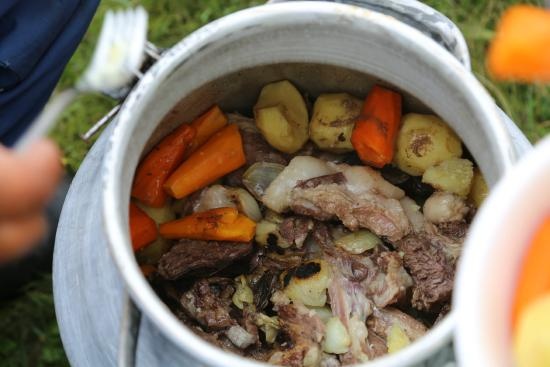
When hot enough, they are placed in layers with the meat in a metal container, which is often a milk can.
Other ingredients are added over the stones and meat, potatoes, carrots, cabbage, seasoning …
Water is added in sufficient quantity for all of the ingredients to be cooked both by the steam and the heat of stones. The container is closed and placed on the fire for an hour to an hour and a half.
At the opening of the container, the Khorkhog is ready to eat.
The family takes out the meat and vegetables, and the stones which turned black, both because of the fire and the fat that they have absorbed.
These stones are still warm and the guests keep them in their hands because Mongols consider them as beneficial to health.
We usually eat the Khorkhog with fingers, with the help of a knife to cut the meat.
This night, we will sleep in a “yurt of hosts” close to the yurts of our nomadic family.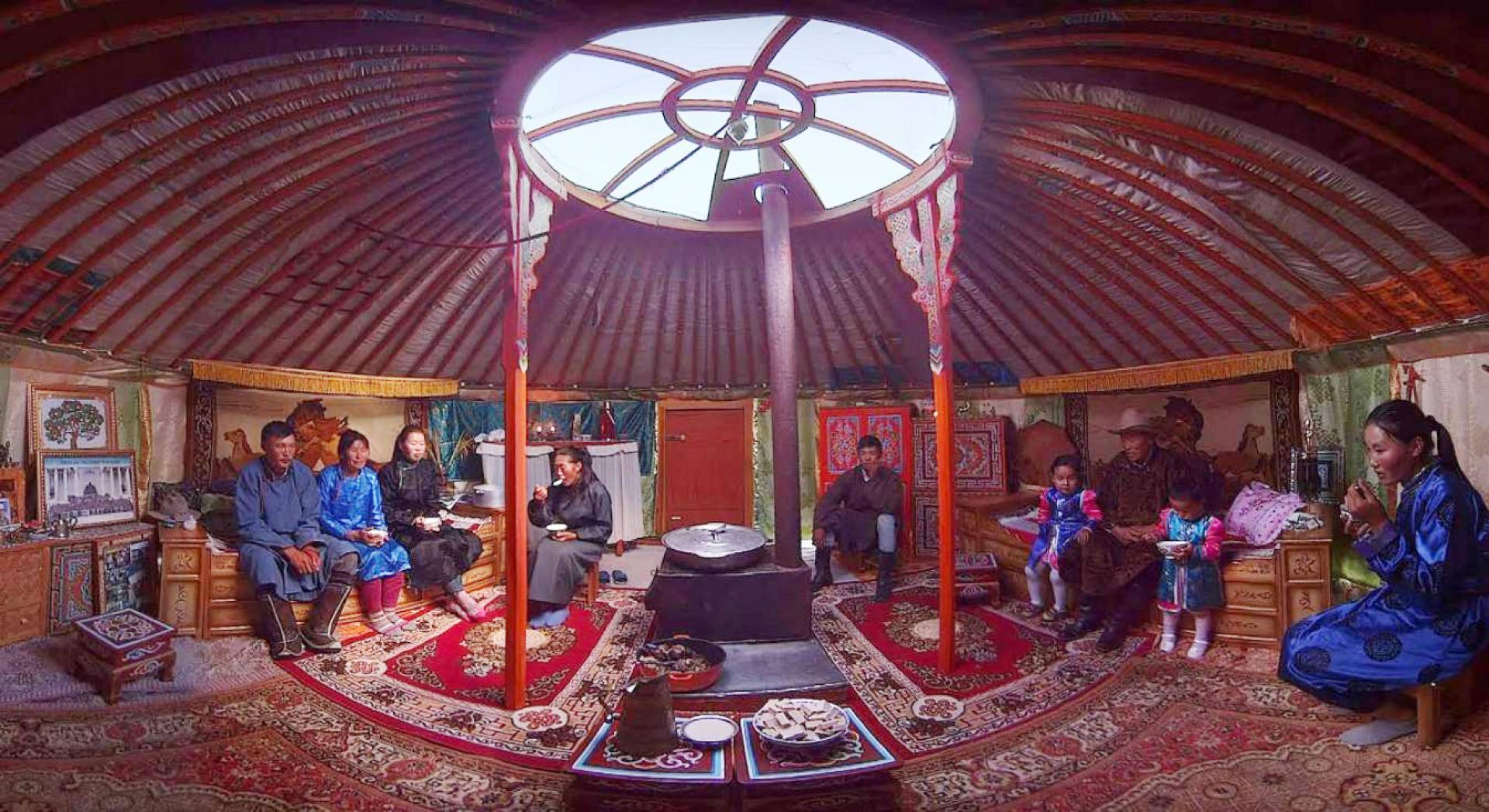
The comfort is simpler and you will discover the real nomadic way of life …
Day – 3 Equestrian Monument of Chingis Khan to Lake Bleu of “Khar Zurkhnii”
Breakfast; we continue our great adventure with Lake Bleu of “Khar Zurkhii”.
Picnic and all our stuff brought by your vehicle, so nothing bothers you when you enjoy your adventure!
Lake Bleu of “Khar Zurkhii”: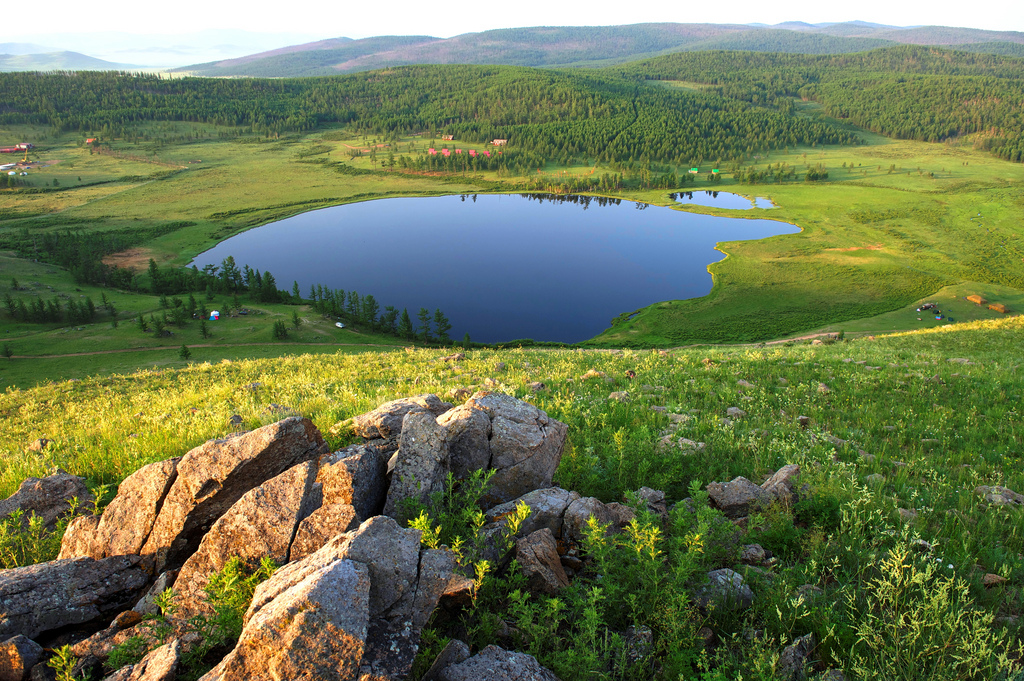
Khar zurh (Black heart) mountain is located in Khentii province, There is a beautiful fresh water lake on top of the mountain called Blue Lake. In 1189, on this place Temujin the king of Mongol Empire takes the title of Chinghis Khan (Universal King). On the edge of lake there is a Chinghis Khan’s stature and many other wooden sculptures of historical figures. The area is a natural wonder. There are two lakes connected undersurface located on the Khar zurkh mountains in the north-west of Tsenhermandal soum and is separated from the Tsenkher river basin by 4 km distance to the forest called Tsagaandavaa. The black heart is a tree with its backwoods and a heart shape. The Khar zurkhnii Huh Nuur is largely deserted larch, birch, red-populated, bushes and muddy areas.
This beautiful little lake and its wooded shores are a great place to camp.
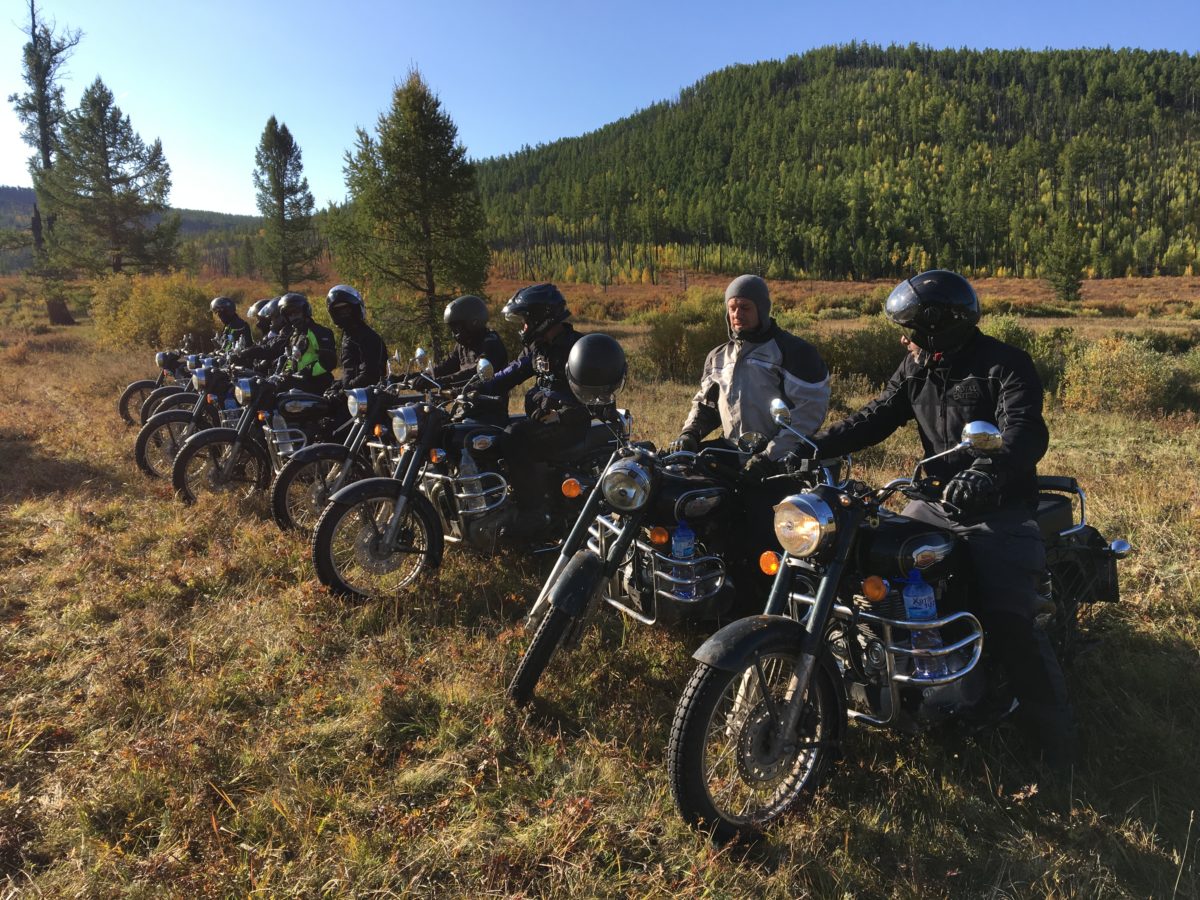 Each motorcyclist installs his own tent (tent (Quechua) provided at no extra cost).
Each motorcyclist installs his own tent (tent (Quechua) provided at no extra cost).
A shower tent and a large tent for preparing meals make our camp comfortable.
Each nature camp, when we arrive at the planned place, we choose a quiet and sublime place for dinner and overnight.
Day – 4 Lake Bleu of “Khar Zurkhii” to Binder
Breakfast; we continue our road towards the northeast in order to reach the homeland of Chinggis Khan. We admire on the road the typical landscapes of Mongolia: vast green valleys, interspersed by mountain ranges. Several interesting stages will feed our route, such as the ruins of the Bereeven monastery . Created in the 17th century, this monastery was the religious center of eastern Mongolia. Originally, it was a nomadic monastic complex: installed in yurts, it changed places regularly. It was only during the Manchu period in Mongolia that he settled in this location. Another historic site awaits us today; the fortress of Uglugchiin Kherem, which has many surprises in store for us.
. Created in the 17th century, this monastery was the religious center of eastern Mongolia. Originally, it was a nomadic monastic complex: installed in yurts, it changed places regularly. It was only during the Manchu period in Mongolia that he settled in this location. Another historic site awaits us today; the fortress of Uglugchiin Kherem, which has many surprises in store for us.
Picnic or all our stuff brought by your vehicle, so nothing bothers you when you enjoy your adventure!
Each motorcyclist installs his own tent (tent (Quechua) provided at no extra cost).
A shower tent and a large tent for preparing meals make our camp comfortable.
Each nature camp, when we arrive at the planned place, we choose a quiet and sublime place for dinner and overnight.
Day – 5 and 6 Binder to Dadal
After a few hours on the road, we discover Dadal, the country of Chinggis Khan. According to the secret history of the Mongols, he was born in 1162, at the junction of Onon and Balj. An engraved stone was erected here in honor of the famous emperor. There are also 3 small freshwater lakes. Populated by forests and green mountains, the region is of remarkable beauty. It is characteristic of Siberia in particular by its way of living, because here, people most often live in small wooden houses.
Picnic and all our stuff brought by your vehicle, so nothing bothers you when you enjoy your adventure!
We spend 2 nights at this beautiful place.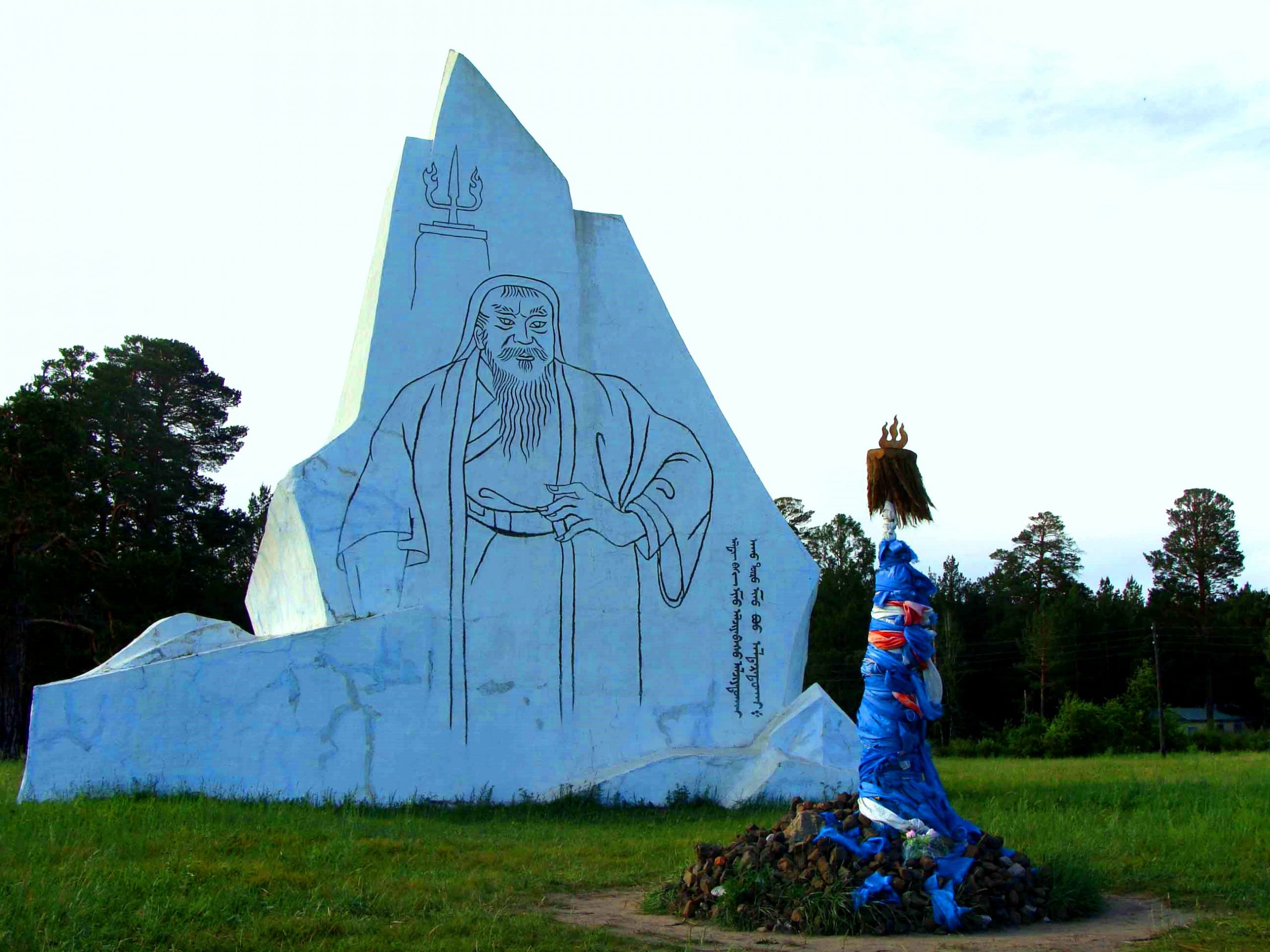
The following day will be a day of rest in Dadal will allow us to discover a little more this magnificent place. Walk in the forest, swim in the lakes, or go fishing in the nearby rivers.
Each motorcyclist installs his own tent (tent (Quechua) provided at no extra cost).
A shower tent and a large tent for preparing meals make our camp comfortable.
Each nature camp, when we arrive at the planned place, we choose a quiet and sublime place for dinner and overnight.
Day – 7 Dadal to Chinggis city
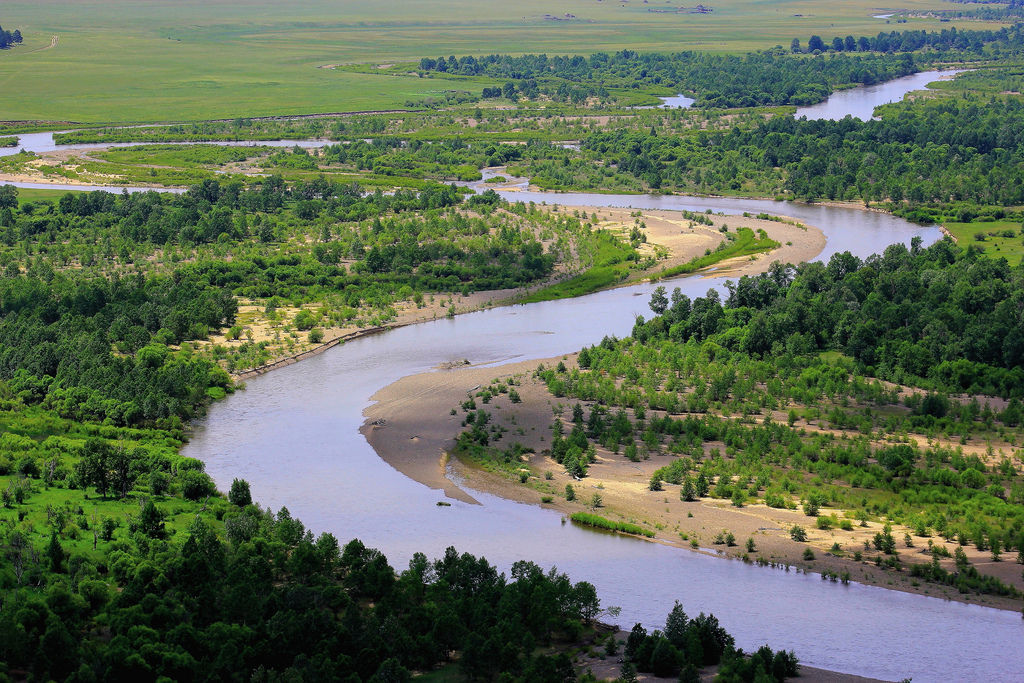
Breakfast; today we will reach the city of Chinggis, capital of the province of Khentii.
We will visit a small temple which is also the museum of Tsetsen Khan. Overnight by the Kherlen river. This river is one of the largest in the country. It flows east before flowing into the Pacific Ocean.
Picnic and all our stuff brought by your vehicle, so nothing bothers you when you enjoy your adventure!
Each motorcyclist installs his own tent (tent (Quechua) provided at no extra cost).
A shower tent and a large tent for preparing meals make our camp comfortable.
Each nature camp, when we arrive at the planned place, we choose a quiet and sublime place for dinner and overnight.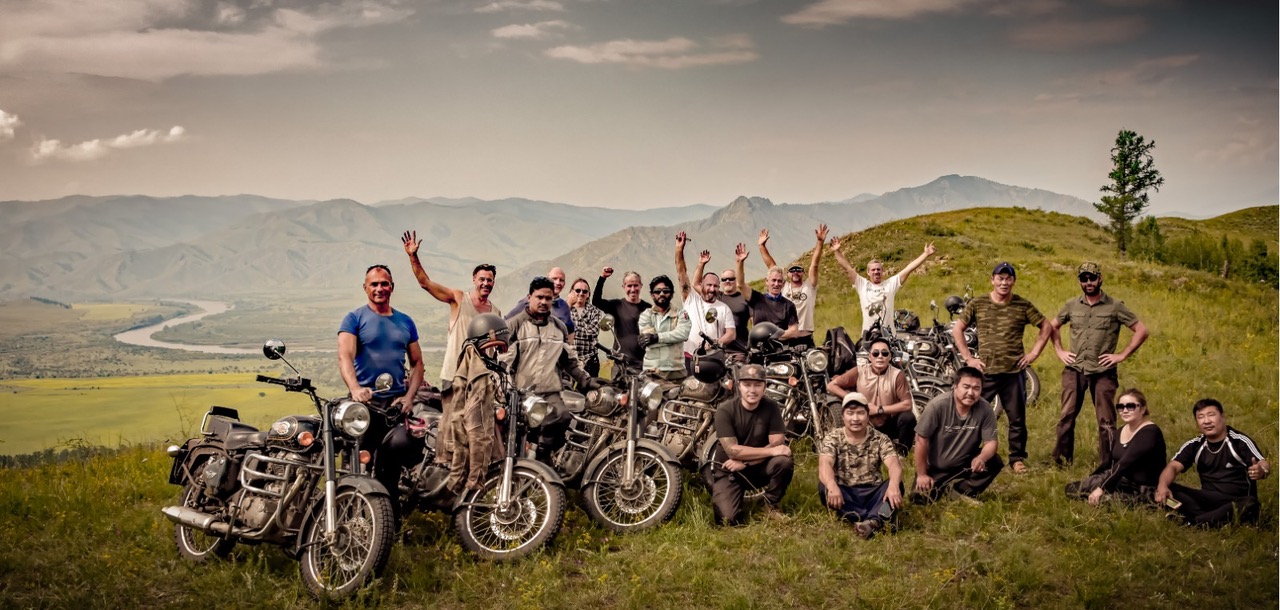
Day – 8 Chinggis city to Avarga Toson
Breakfast; another important site awaits us today. It is the Khuduu Aral peninsula, located on the bank of the Kherlen River. This is where “the secret history of the Mongols” was written (this document was written in 1228 and tells of the origins and life of the founder of the Mongol empire).
 We will be able to admire the statue made during the 780th anniversary of this historic work. Not far from here, we will find Lake Avarga Toson. Avarga spring water and Toson lake mud are used as medical remedies. This is why many Mongols come here in the hope of getting treatment.
We will be able to admire the statue made during the 780th anniversary of this historic work. Not far from here, we will find Lake Avarga Toson. Avarga spring water and Toson lake mud are used as medical remedies. This is why many Mongols come here in the hope of getting treatment.
Picnic and all our stuff brought by your vehicle, so nothing bothers you when you enjoy your adventure!
Each motorcyclist installs his own tent (tent (Quechua) provided at no extra cost).
A shower tent and a large tent for preparing meals make our camp comfortable.
Each nature camp, when we arrive at the planned place, we choose a quiet and sublime place for dinner and overnight.
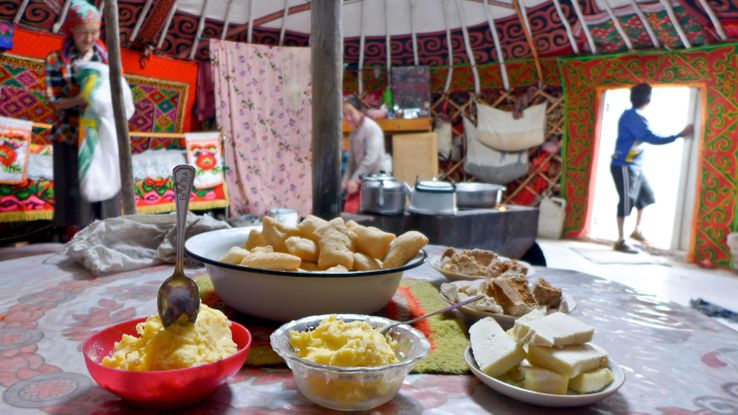
Day – 9 Avarga Toson to Terelj-Gorkhi National Park
Today we will reach Terelj-Gorkhi National Park. Here, the rather mountainous and very hilly landscape reveals many rock formations. Rivers, forests and mountains hide and then reveal reefs with curious, surprising and even unusual shapes.
Excellent place for nature lovers, it is home to lots of birds, animals, and flowers.
Picnic and all our stuff brought by your vehicle, so nothing bothers you when you enjoy your adventure!
After a few kilometers, we discover the famous rock known as the Turtle before joining the unmissable temple of Aryabal.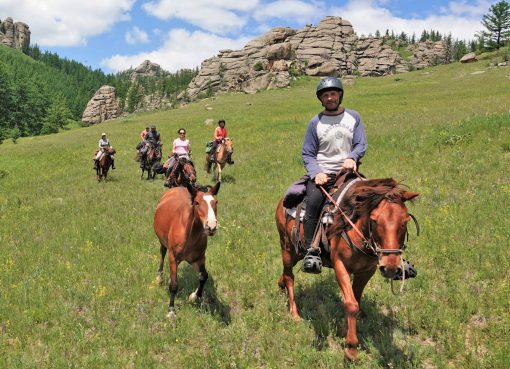
At the end of the day we return to the camp of our host family, a nomad family who lives on the confluence of the Tuul and Terelj rivers.
This night, we will sleep in a “yurt of hosts” close to the yurts of our nomadic family.
The comfort is simpler and you will discover the real nomadic way of life …
Day – 10 Terelj-Gorkhi National Park
This day reserved just for you. Mongolia is a country of horses, so it’s a shame to leave without riding on the back of a Mongolian horse…
In the saddle! The space is ideal for galloping in vast green steppes, surrounded by high forest mountains of the chain of Khentii.  Alongside us, the Terelj river follows its course, crisscrossing between the flowerbeds of edelweiss. It is in this magical and unexpected setting that we have lunch before returning to the camp.
Alongside us, the Terelj river follows its course, crisscrossing between the flowerbeds of edelweiss. It is in this magical and unexpected setting that we have lunch before returning to the camp.
This night, we will sleep in a “yurt of hosts” close to the yurts of our nomadic family.
The comfort is simpler and you will discover the real nomadic way of life …
Day – 11 Terelj-Gorkhi National Park to Ulan Bator
Breakfast and drive to Ulan Bator.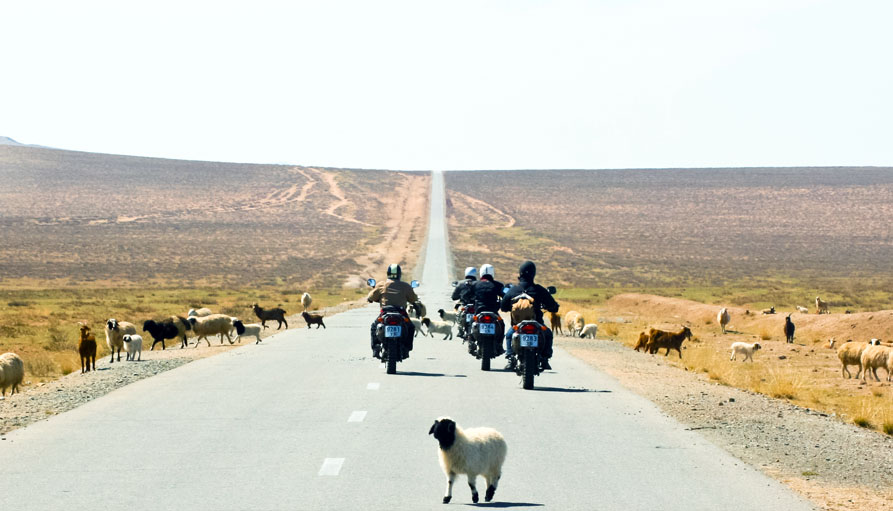
Lunch on roadside restaurant.
Afternoon is dedicated to shopping in stores downtown, or at the Narantuul “black market” where you will find traditional clothing and objects of daily life.
Visit a cashmere factory.
In the late afternoon, you will attend a show with traditional dances, music and songs from Mongolia, especially the amazing Khoomei.
The Khoomei is an overtone singing (throat singing) in which the singer produces two distinctively audible pitches at the same time, including a low pedal note, or drone, derived from the fundamental frequency of the vocal cord vibrations, and higher melodic notes that result when the singer’s mouth acts as a filter, selecting one note at a time from among the drone’s natural overtone series pitches.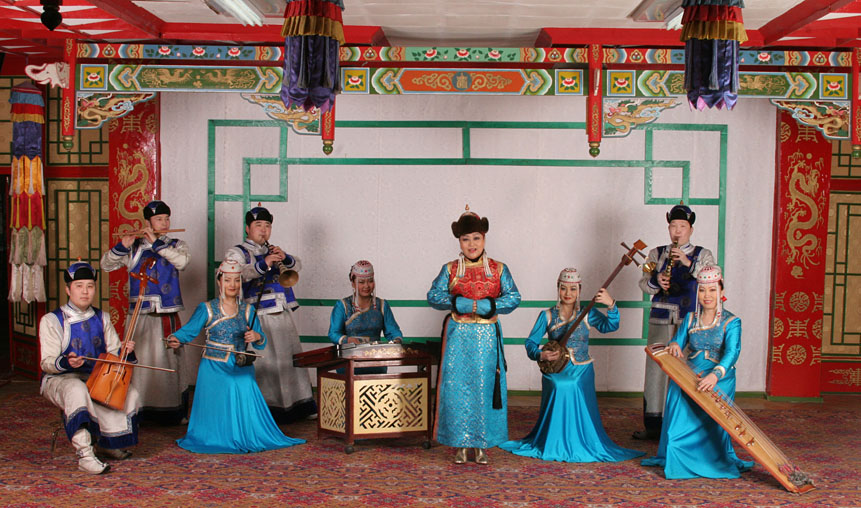
The sound is reminiscent of the Jew’s harp.
This type of song is recorded in Intangible Cultural Heritage of Humanity by UNESCO in 2010.
Dinner downtown and overnight at a 3* hotel (local standard) in the center of Ulaanbaatar.
Day 12: Return Home
Breakfast (depending on your flight schedule) and transfer to airport for your flight back home.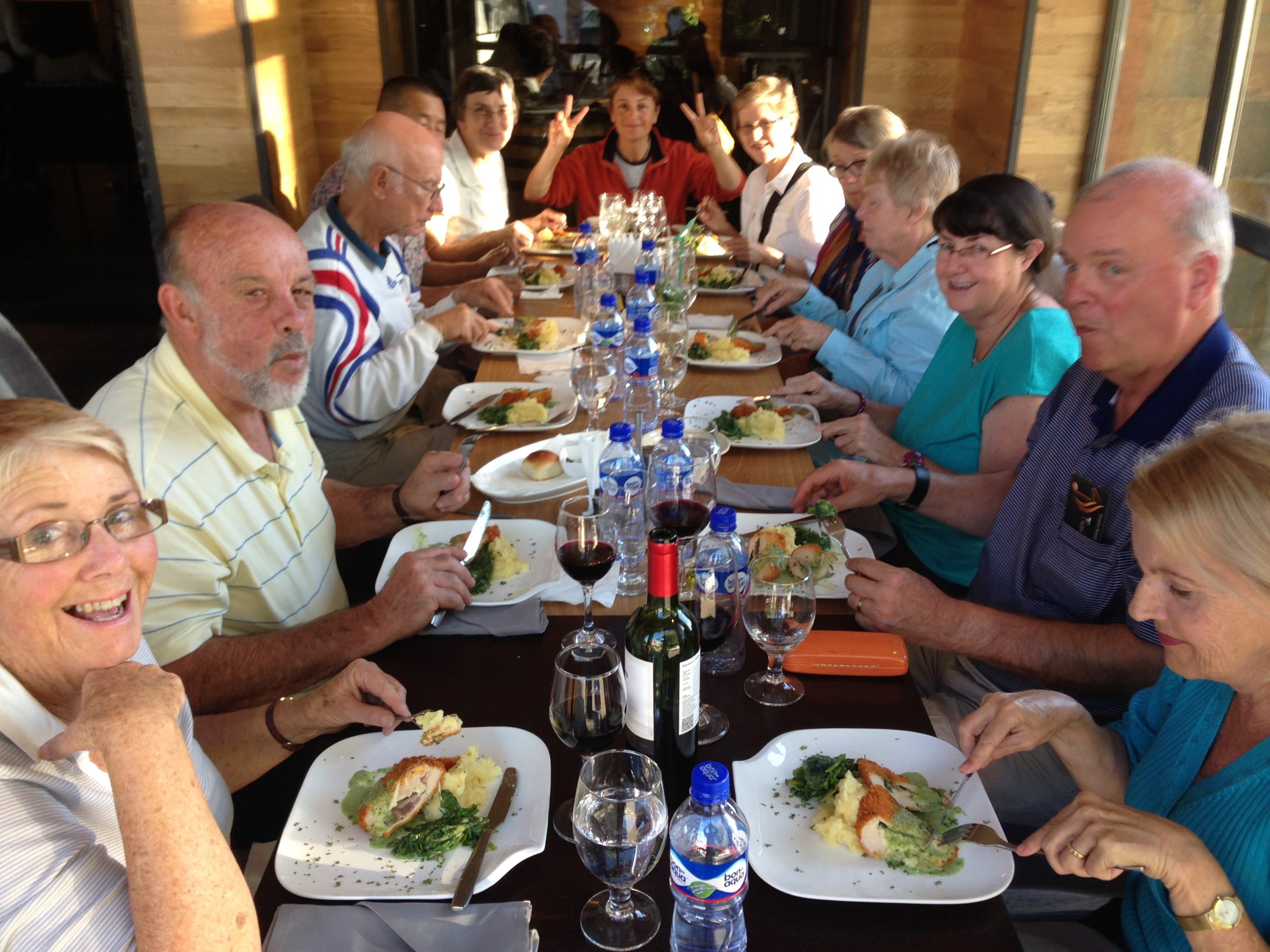
INCLUDED
- Airport / hotel / airport transfers
- 2 nights in a ** hotel in Ulaanbaatar, breakfast included
- Full board during the excursion
- Meal at Ulan Bator
- Mineral water
- 3 nights homestay, in guest yurt
- 6 nights in a tent
- Travel in 4×4 or mini bus + driver
- Gasoline
- Motorcycle rental + gasoline + 1 additional motorcycle for 3 or 4 people in case of breakdown
- Motorcycle guide speaks English
- Cook for groups> 4 participants
- Horse ride
- Local horse guide
- Entrance fees to the parks and museums mentioned
- Traditional show
- IRIDIUM satellite phone
- Kitchen equipment (mess tent, camping tables and chairs) and for sleeping (tent, sleeping bag, ground mattress), sanitary tent
NOT INCLUDED
- International transport
- Passport & Visa Fees
- Repatriation insurance
- Travel insurance
- Extra drinks / alcohols
- Phone calls
- Any excursion not mentioned in the program
